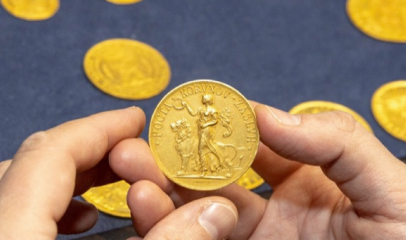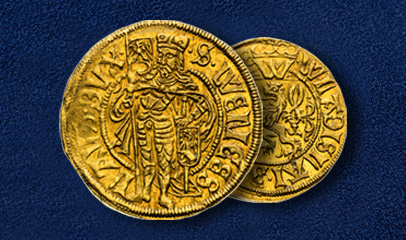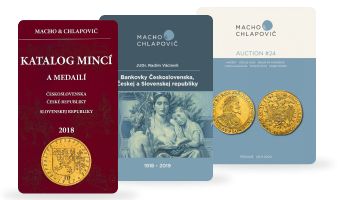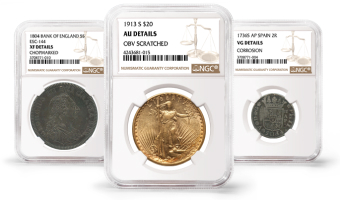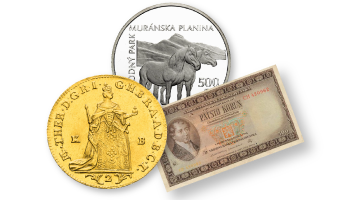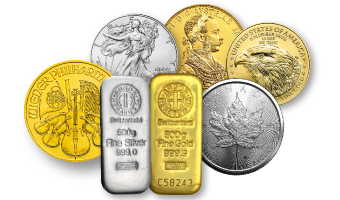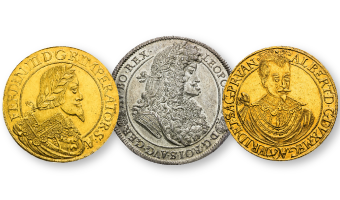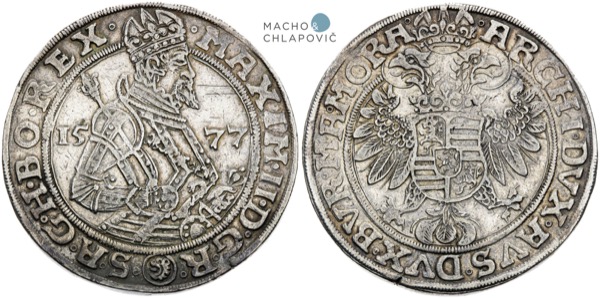
Early Mining and the Foundation of the Mint
Even before the mid-16th century, the attention of the Bohemian Chamber had turned to South Bohemian Rudolfstadt. Silver mining in this area was developing promisingly. While the yields of these mines could not compare with those of Joachmisthal or Kuttenberg, they nevertheless attracted well-deserved interest. The silver output from Joachmisthal and Kuttenberg had been in noticeable decline for several decades, and as mining production fell, so did the revenues of the royal treasury. Hopes that investments in South Bohemia could reverse this unfavorable trend led to great expectations. At the request of mining entrepreneurs and with the intention of supporting the industry in Rudolfstadt, the Bohemian Chamber agreed in the late 1560s to establish a mint in nearby Budweis.
Engravers and Die Production
The first mintmaster of the Budweis mint was Tobias Gebhart. The first coin dies, dated 1569, were supplied by Nickel Milicz from Joachmisthal. He was soon replaced as die cutter by Mates Doctor from Linz, who had known Gebhart since the early 1560s, when he was supplying dies to the Prague mint, where Gebhart served as wardain. However, Doctor did not supply dies for long. As records from the mint reveal, by 1573 at the latest, die production had been taken over by Michael Stolz, a member of a goldsmithing family based in Breslau (Wrocław). When he moved to Budweis is unknown, but by 1573 he had already supplied dies for all kreuzer denominations.
Artistry and Decline in Production
After kreuzer coinage was replaced by thaler production in 1573, Stolz continued to provide dies regularly until 1576. His work is responsible for the striking artistic quality of the earliest Budweis thalers, which can rightly be considered rare issues. Despite promising results in the early 1570s, the output of the Rudolfstadt mines quickly dwindled, leading to a sharp decline in the amount of silver available for minting large-denomination coins.
Several well-preserved thalers from Stolz’s dies, including a rare 1574 half-thaler from the Kokolus Collection, will be auctioned under numbers 345–352 and 356–357.
Bonifaz Riedel and the Emergence of a New Style
Probably in 1576 or early the following year, Michael Stolz relocated to Prague, where he began supplying dies to the Prague mint. In Budweis, he was succeeded by Bonifaz Riedel, a Budweis native and goldsmith. Riedel likely began supplying dies to the mint by late 1576, as Budweis coinage from that year appears both in the old design and in a completely new style.
The thalers of this period feature a portrait of the ruler with an elongated, somewhat stylized profile. Particularly striking are the massive eagle heads on the reverse of the thalers and white groschen. The extremely rare Maximilian thalers from Riedel’s dies bear the date 1577. These were minted posthumously during the reign of Rudolf II, while awaiting the emperor’s approval of new coinage designs.
A unique collection of Budweis thalers from 1576 and 1577, including a one-of-a-kind 1576 half-thaler from the Jaroslav Kokolus Collection, will be auctioned under numbers 354, 355 and 358.
👉 Learn more about the earliest Budweis coinage minted from Rudolfstadt silver in the article:
Selected Auction Highlights
Item 345. Thaler 1573. Budweis
Extraordinary specimen with mint lustre in the fields!
Grade: EF | about UNC — Starting price: €12,000

Item 350. Thaler 1575. Budweis
Mint lustre in the fields. Somewhat weakly struck. Nice patina. Missing in the Wiener Münzkabinett Collection! Very rare!
Grade: EF | EF — Starting price: €14,000

Item 354. Thaler 1576. Budweis
Patina. Extremely rare!
Grade: good VF | about EF — Starting price: €12,000

Item 355. Thaler 1577. Budweis
Scratches. Extremely rare!
Grade: good VF | good VF — Starting price: €18,000

Item 358. ½ Thaler 1576. Budweis
Origin in old collection. Nice patina. Hole repaired. Little scratches. Missing in the Wiener Münzkabinett Collection! Unique!
Grade: about EF | EF — Starting price: €8,000



